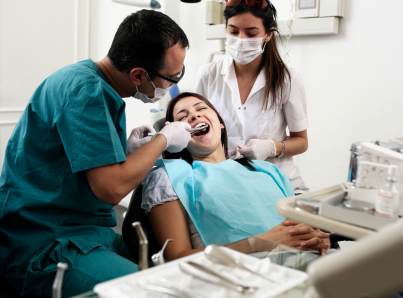Group Dental Benefits
Group dental benefits, also referred to as dental care are one of the most valued benefits by employees. A group dental benefits plan pays for and allots dental services by type of care such as basic, preventative or routine care, major restorative and orthodontic services. Typically, group dental plans base benefit amounts payable on the reasonable and customary charges up to the fee guide in effect where the covered individual resides.
Covered Services:
Basic Services:
- Diagnostic procedures including dental exams, a limited oral exam (recall exam), x-rays and laboratory reports.
- Preventative procedures such as teeth cleaning, polishing, light scaling, topical fluoride/sealants and other preventative procedures.
- Dental surgery (other than accidental) such as removal of impacted teeth, diagnostic x-ray and laboratory reports in relation to the dental surgery.
- Minor treatment to restore the functional use of natural teeth through the use of amalgam, silicate, acrylic and composites, pit and fissure sealants. Repair may be for damage due to wear and decay.
- Periodontal services to treat the bone and gum around the tooth, including deep scaling, mouth guards and periodontal appliances.
- Endodontic services to treat the root of the natural tooth such as a root canal.
Some group plans may also cover relining, rebasing and repairing of dentures, crowns and bridgework.
Major Restorative:
- Major restorative to restore the normal function of the natural tooth with artificial appliances such as crowns, inlays and onlays.
- Prosthodontic services which are designed to replace missing teeth and structures with removable appliances such as full or partial dentures and non-removable or fixed appliances such as bridgework, crowns/caps and veneers.
Orthodontic Services:
- Orthodontic procedures required for the prevention, diagnostics and correction of dental and oral irregularities, as well as defects of the jaws through the use of corrective devices such as wires, tooth bonding, braces, space maintainers or other mechanical aids used to reposition teeth. Typically, orthodontic services are limited to dependent children under a specified age, usually under 19.
Group dental benefit payment calculations are generally based on deductibles, coinsurance and maximums.
Deductibles:
Dental deductibles are applied on an annual basis. A few examples are individual/family, $25/$25, $25/$50, $50/$100.
Coinsurance:
Coinsurance is the percentage of eligible expenses (after the deductible is applied) eligible for reimbursement under the dental benefits plan. Coinsurance levels vary based on the type of service, from 50% (typical for major and orthodontic) to 100% for basic and preventative.
Maximums:
Typically, dental plans include a calendar year maximum such as $1,000, $1,500, $2,000 or $2,500 and can be applied separately to each category of services or on a combined basis. Orthodontic services often have a separate lifetime maximum which can range from $1,000 to $3,000.
Frequency and Recall:
Dental recall limits how often certain dental benefits are paid such as routine check-ups, cleaning, scaling and x-rays. Recall for cleanings is typically set at twice per year or every six months and sometime every nine or twelve months. Periodontal scaling is typically limited to units of time, typically eight or ten units.
Predetermination of Benefits:
It is generally recommended (or required) that procedures expected to cost more than a pre-determined amount be reviewed by the insurer prior to treatment. This can be done by your dental office on your behalf.
Survivor Benefits:
Group benefit plans may allow for the continuation of dental benefits for dependents of a covered employee following his or her death. The survivor benefit will typically be available for up to two years with specific eligibility requirements and conditions.

